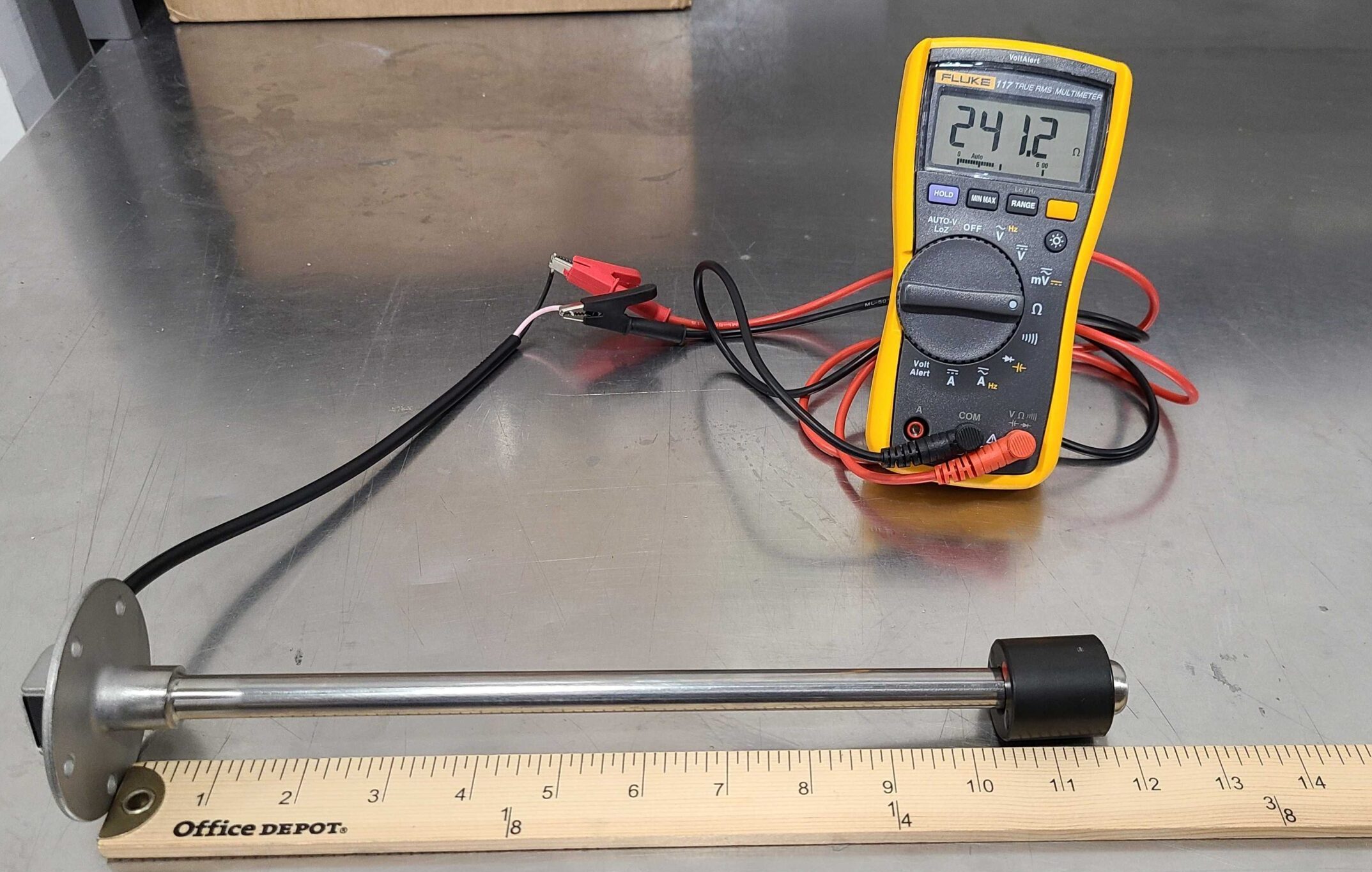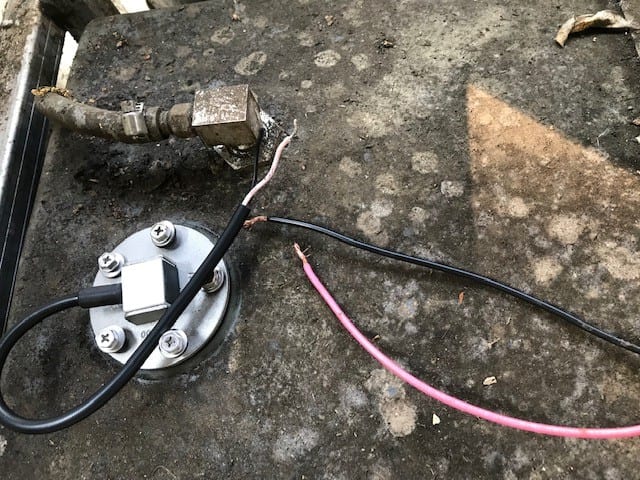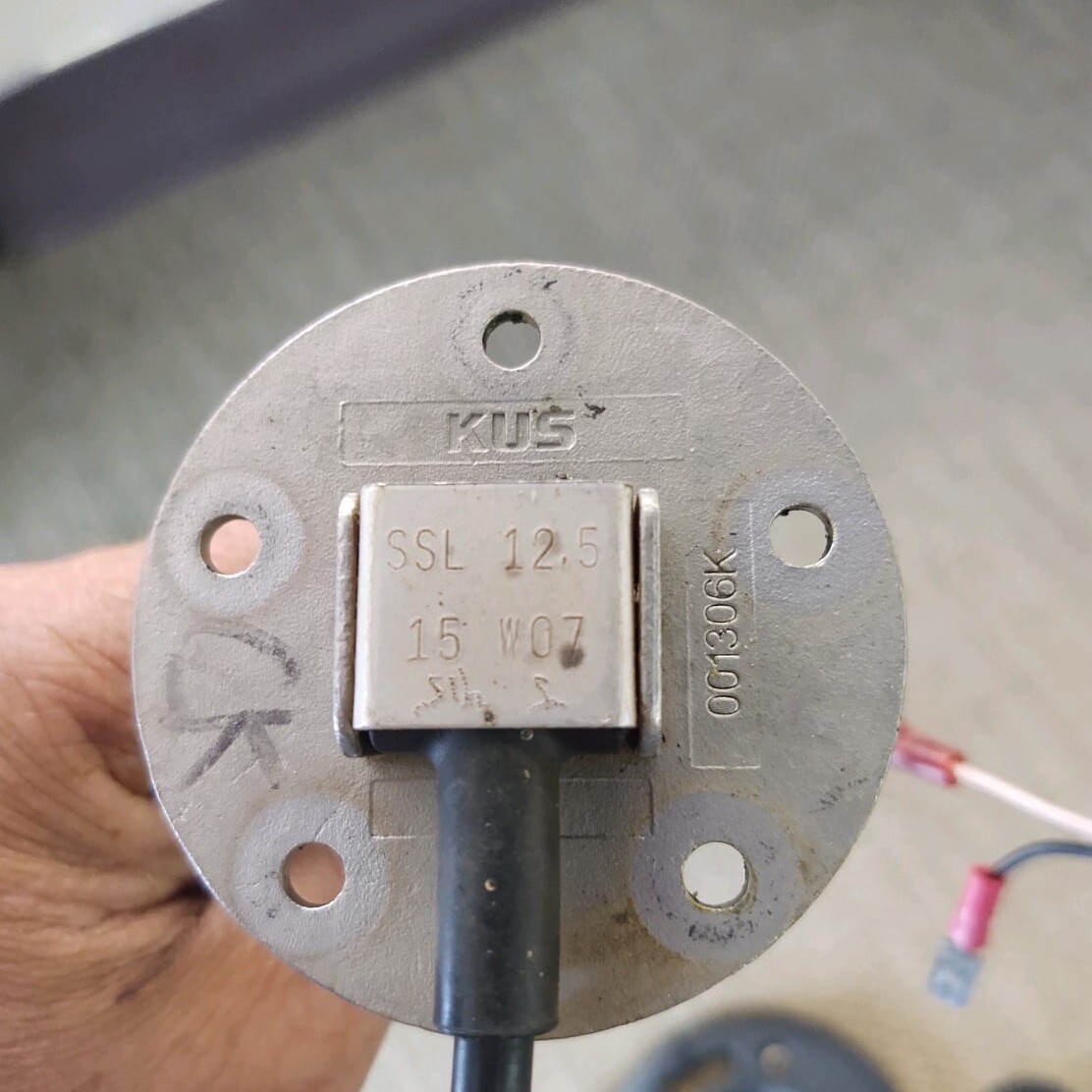
When you’re out on the water, you want to relax and assume that all of the gauges and components on your boat are working smoothly. However, if you feel like your boat’s fuel gauge is giving inaccurate readings, or worse — you run out of fuel unexpectedly, you might have a problem with your fuel level sender. A marine fuel level sender and fuel gauge work as a unit, but for purposes of this article, we’ll focus on the level sender, helping you diagnose it and replace it if needed, so you can get back to boating.
How a Fuel Level Sender Works
The fuel level sender, also referred to as a fuel level sensor or sending unit, is connected to the fuel gauge by a sender wire. It is also attached to a float, which moves with the fuel level in the tank (It works a bit like a float in the tank of a toilet). Together, this assembly tells your fuel gauge how full the tank is. The sender changes resistance, measured in ohms as the fuel level drops and the float descends. Changes in resistance move the gauge needle.
It’s a good idea to familiarize yourself with these parts before they cause problems. Look for a small, round plate at the top of your boat’s fuel tank. You will often get to it through a deck plate at the aft end of the tank.

Your fuel sender will have either two or three connections. For the three connection type, one wire runs to the gauge, another wire connects to the power supply, and the last wire connects to the ground or the negative side of your battery. For the two connection type, one wire runs to the gauge, where it draws power and sends you your fuel level signal, and another wire connects to the ground.
How to Know the Sender is Faulty
As we said above, you may have a bad fuel level sender if you run out of gas when your gauge says you have plenty left. A fuel sensor issue may also cause:
-
- The fuel gauge needle to become stuck on full or empty
- The fuel gauge needle to bounce erratically from one reading to another (this can happen for short senders, not really a bad sender)
Before attempting any troubleshooting or part replacement, make sure you are confident and knowledgeable in what you’re doing. Exercise EXTREME CAUTION when working around fuel tanks. If you are inexperienced with boat repair, it’s a good idea to take your boat to a marine repair facility or boat dealership service department.
First, you will want to rule out other causes of an inaccurate fuel gauge reading.
-
- Confirm that the gauge is receiving power
- Check whether the needle on the gauge is physically stuck due, perhaps, to moisture or rust
- Disconnect the sending wire and the gauge should move immediately to “full”; if so, the gauge is not the source of the problem
- Test the sender wire with an ohms multimeter to rule out a wiring problem
If you proceed through all of the above and still see an issue, the fuel level sender is probably damaged. Remember, it’s possible that the sender and the gauge both need to be replaced.
Troubleshooting Your Fuel Level Sender
Once you narrow down the source of your issue to the fuel level sender, perform the following steps to learn what’s wrong with it.
-
-
- Check to see if you have power from the gauge to the sending unit (black wire). The reading at the sending unit (black wire) will be less than the input voltage on the gauge (red wire).
- Check the sending unit ground (pink or blue wire). The pink or the blue wire must be properly grounded to a common ground or to the negative side of your battery.
- To check the sending unit operation, turn all power to your gauge off, and disconnect the sender wires at the sending unit (You may need to cut and reconnect the wires later.)
-
Remember, if your tank is not rectangular, you are reading liquid level, not gallonage. Put an ohmmeter on the two disconnected sender wires and take a reading:
-
- For the standard American version sender (240-30 ohms), you will have between 232 to 252 ohms @ empty, and 28 to 36 ohms @ full.
- For the standard European version sender (0-180 ohms), you will have between 0 to 2 ohms @ empty, and 171 to 192 ohms @ full.
If you do not know the liquid level in your tank, you will need to remove the sending unit from the tank. Once the sending unit is removed, slide the float up and down, and verify the above-mentioned readings with an ohmmeter.
You may be able to fix your issue by replacing faulty wires. If not, it’s time for a replacement. Marine fuel level senders do not last forever, and lesser quality ones will likely fail sooner than others.
How to Find the Right Fuel Level Sender for Your Boat
When you replace the fuel level sender in your boat, you can choose to replace it with the same brand or invest a high-quality sender from a reputable component manufacturer like KUS.
If you already have a KUS sending unit, you will need to identify the model. Look at the model number on the aluminum cap at the top of the unit.

If you do not have a KUS sending unit and need to identify a KUS replacement for your sending unit, please contact us with the following information:
-
- Tank depth or current sender length
- Output/operating ohms range
- Mounting style (how the unit mounts to the tank)
We will be happy to talk with you to help find the right marine sender and/or gauge for your boat.
